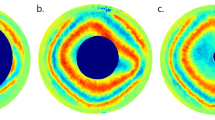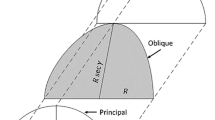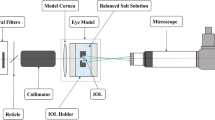Abstract
IN their external shape and optical properties, the crystalline cones of the ommatidia in the compound eye of Limulus polyphemus strikingly resemble ideal light collectors. Such devices were developed1 in a totally different context: for the purpose of optimising the collection of the extremely faint radiation produced in a transparent medium by faster-than-light charged particles (Cherenkov light). Ideal light collectors are ogival-shaped light guides designed to maximise the concentration of diffuse light within a specified angular acceptance. These light guides are optically homogeneous and derive their characteristic properties from the specific shape of the exterior surface which is made specularly reflecting.
This is a preview of subscription content, access via your institution
Access options
Subscribe to this journal
Receive 51 print issues and online access
$199.00 per year
only $3.90 per issue
Buy this article
- Purchase on Springer Link
- Instant access to full article PDF
Prices may be subject to local taxes which are calculated during checkout
Similar content being viewed by others
References
R. Winston, J. opt. Soc. Am., 60, 245–247 (1970).
Hartline, H. K., Wagner, H. G., and Mac-Nichol, E. F., jun., Cold Spring Harb. Symp. quant. Biol., 17, 125–141 (1952).
Hartline, H. K., Science 164, 270–272 (1969).
Carricaburu, P., C.r. hebd. Seanc. Acad. Sci. Paris Serie D., 264, 1476–1478 (1967).
Fahrenbach, W. H., Z. Zellforschung, 87, 278–291 (1968).
Winston, R., and Enoch, J. M., J. opt. Soc. Am., 61, 1120–1121 (1971).
Exner, S., Die Physiologie der facettierten Augen von Krebson und Insekten (Fr. Deuticke, Leipzig und Wien, 1891).
Author information
Authors and Affiliations
Rights and permissions
About this article
Cite this article
LEVI-SETTI, R., PARK, D. & WINSTON, R. The corneal cones of Limulus as optimised light concentrators. Nature 253, 115–116 (1975). https://doi.org/10.1038/253115a0
Received:
Revised:
Issue Date:
DOI: https://doi.org/10.1038/253115a0
This article is cited by
-
Compound eyes: old and new optical mechanisms
Nature (1980)
-
The optical mechanism of the eye of Limulus
Nature (1979)
-
The effect of light-dark adaptation on the ultrastructure ofLimulus lateral eye retinular cells
Journal of Comparative Physiology ? A (1976)
Comments
By submitting a comment you agree to abide by our Terms and Community Guidelines. If you find something abusive or that does not comply with our terms or guidelines please flag it as inappropriate.



